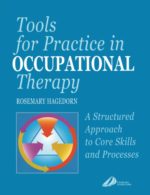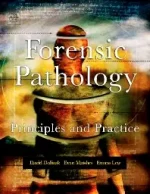-
Agricultural Marketing and Price Analysis
KSh 9,330.00Norwood and Lusk provide a fresh approach to marketing and price analysis that speaks to undergraduate students. In addition to providing thorough coverage of core topics, they address exciting developments and emerging areas of research in the field. Friendly and engaging, Agricultural Marketing and Price Analysis presents a comprehensive approach to agricultural price analysis, agricultural market structures, and agricultural marketing strategies.
Unique to this book is the inclusion of the equilibrium displacement model and a chapter on consumer behavior and research. The Meet the Professional feature illustrates how the economic principles covered fit into the careers students will soon enter. End-of-chapter crossword puzzles and study questions assist in learning terminology and test preparation. Succinct and approachable, this text sets the stage for an enjoyable and effective learning experience.
-
The Automatic Millionaire Homeowner: A Lifetime Plan to Finish Rich in Real Estate
KSh 1,495.00Updated with a new chapter of success stories
Owning a home has always been the American Dream, and in The Automatic Millionaire Homeowner, David Bach shows that buying a home and investment properties is not only possible, it is still the surest way to reach your seven-figure dreams on an ordinary income. Whether you are a renter or already own a home, Bach’s book offers a lifelong strategy for real estate based on timeless wisdom that is tried and true—in any market. He includes everything you need to know, with step-by-step instructions, including phone numbers and web sites, so you can get started right away. As long as you’re alive, you have to live somewhere. Why not let where you live make you financially secure and ultimately rich? David Bach will show you how.
-
Tools for Practice in Occupational Therapy, 1st Edition
KSh 11,460.00This key text has been written to bridge the gap between the books on the theory of occupational therapy and those which look at the occupational therapy management of specific conditions, i.e., it links the theory to practice. It looks at the 4 core processes which form the basis of the unique practice of OT: assessment and evaluation of individual potential and performance, occupational analysis and adaptation, environmental analysis adaptation and therapeutic use of self. It introduces the student to the scope and purpose of each of these processes and gives practical information about their application in relation to working with adults.
A practical guide to the core skills and processes of occupational therapy
Outlines the theory but firmly relates it to practice
Introduces a process-based client-centred model: Competent Occupational Performance in the Environment (CORE)
Reflects the latest thinking in OT including occupational and environmental analysis
Highly readable and free of jargon -
Ken The Calf
KSh 395.00A Baby Animal Story Book
Follow Ken the Calf on a delightful journey of discovery and learning—an engaging storybook perfect for young children and early readers. -
Copy Colouring-Sea Animals
KSh 295.00A perfect book to develop the creativity of budding artists as they explore and learn about sea animals with the help of colours. The book has perfect blend of simple and complex designs to provide them with several hours of colouring fun and help them develop their motor skills, observation and patience.
-
The Elite
KSh 1,295.00America Singer has the chance to leave normal life for a world of glamour and luxury… for ever.
She was chosen for The Selection, a reality TV competition to be gorgeous Prince Maxon’s bride. Surviving the rivalry and turmoil of the first round was tough, especially with secret feelings to conceal. But America’s gone further than she dared to dream and made it to The Elite – the final six.
Friendships are tested to breaking point as favourites emerge. America’s feelings for Maxon grow ever stronger, but she suspects darker mysteries in his family past. With Aspen close-by offering comfort, solace and something more, where do her loyalties truly lie?
About the Author
Kiera Cass graduated from Radford University with a degree in History. She grew up in South Carolina and currently lives in Blacksburg, Virginia with her family. In her spare time, Kiera enjoys reading, dancing, making videos and eating unhealthy amounts of cake.
-
Crave; A novel of the fallen angel-J.R WARD
KSh 400.00crave-The battle between good and evil has left the future of humanity in the hands of a reluctant saviour and his band of fallen angels. Seven deadly sins that must be righted. Seven souls that must be saved. Fallen Angel Jim Heron has completed his first task: helping Vin Di Pietro to redeem his soul. Now he must identify and battle a demon that can take any form. Worse still, his old boss Matthias wants him to assassinate Isaac, a member of The Firm who’s gone AWOL – and Jim’s pretty sure he’s supposed to save him. But before Jim can get to Isaac to warn him, Isaac’s picked up by the police for illegal street fighting. It’s soon clear that he is falling for his gorgeous public defender – will their love redeem his soul? Or has the demon Devina, who’s determined to see Jim fail, set an elaborate trap?
KSh 895.00 -
The Wide Window (A Series of Unfortunate Events)
KSh 650.00There is nothing to be found in the pages of A Series of Unfortunate Events but misery and despair. You still have time to choose another international best-seller to read. But if you must know what unpleasantries befall the charming and clever Baudelaire children read on . . . In The Wide Window we encounter a story that includes a hurricane, a signalling device, hungry leaches, cold cucumber soup, a horrible villain and a doll named Pretty Penny. With 5 million copies sold in the UK alone, one might consider Lemony Snicket’s A Series of Unfortunate Events to make him one of the most successful children’s authors of the past decade. We, however, consider these miserable so-called adventure stories and the Hollywood film starring Jim Carrey that accompanied the books for children as nothing more than a dreadful mistake.
-
Diseases of Ear,Nose and Throat-3rd edition
KSh 12,200.00Diseases of Ear Nose and Throat Mohan Bansal – Complete ENT Guide for Students
The book Diseases of Ear Nose and Throat Mohan Bansal (3rd Edition, 2021) is a must-have for every medical student studying Otorhinolaryngology. It simplifies complex ENT concepts, provides updated clinical information, and helps readers build confidence in diagnosing and managing ear, nose, and throat diseases.
At BookSaves.com
, you can easily order this ENT textbook online and enjoy fast delivery across Kenya 🇰🇪.What ENT Means and Why It Matters
ENT (Ear, Nose, and Throat) refers to a medical specialty formally known as Otorhinolaryngology — a vital branch of medicine that deals with hearing, breathing, and speech functions.
Ear: Covers hearing problems, ear infections, and balance disorders.
Nose: Focuses on sinus issues, nasal blockages, and smell problems.
Throat: Involves voice, tonsil, and swallowing disorders.
You can learn more about ENT from trusted medical resources like
👉 The American Academy of OtolaryngologyWhy Choose Diseases of Ear Nose and Throat Mohan Bansal?
Among ENT textbooks, Diseases of Ear Nose and Throat Mohan Bansal stands out for its clear presentation and logical flow. It is especially recommended for MBBS, BSc Nursing, and postgraduate students because it’s simple, practical, and fully updated with modern diagnostic methods.
Key Features of the Book
. Concise chapters covering all ENT diseases
. 200+ clinical illustrations and images
. Case-based learning and self-assessment questions
. Updated surgical techniques and modern diagnostic tools
. Easy-to-understand language for students at all levels
This book makes ENT accessible, even to beginners. It explains everything from ear anatomy to throat infections, ensuring students get a complete picture.
Learning Benefits of Using Diseases of Ear Nose and Throat Mohan Bansal
Diseases of Ear Nose and Throat Mohan Bansal offers more than just theory — it provides real-world medical knowledge. Each section integrates anatomy, pathology, and treatment methods, helping readers understand how ENT diseases develop and how to treat them effectively.
Students love it because:
. It’s exam-friendly with review summaries.
. It follows the latest medical curriculum.
. It’s perfect for quick revision before practical exams.
For more ENT learning support, you can explore related resources such as
👉 Medscape ENT EducationBuy ENT Books Online in Kenya
You can get your copy of Diseases of Ear Nose and Throat Mohan Bansal at BookSaves.com
. We specialize in medical and academic textbooks, including:. Anatomy Books
. Nursing Books
. Medical Reference Books
Why Shop with BookSaves?
. Reliable nationwide delivery
. Competitive prices
. Genuine medical editions
. Friendly customer support
We also ship internationally so you can order from anywhere in the world.
Related ENT Books Available at BookSaves
. Logan Turner’s Diseases of the Nose, Throat and Ear
. Scott-Brown’s Otorhinolaryngology
. Clinical Methods in ENT by Dhingra
ENT for Undergraduates by Clarke and Burton
Explore more medical titles on our BookSaves ENT Collection
page.Conclusion: Why Every Student Needs Diseases of Ear Nose and Throat Mohan Bansal
The Diseases of Ear Nose and Throat Mohan Bansal textbook continues to be one of the most trusted resources for understanding ENT. With its clear explanations, clinical approach, and updated information, it’s an invaluable book for both medical students and practitioners.
📘 Order your copy today at BookSaves.com
— your one-stop shop for quality medical and academic books in Kenya and beyond.
-
Forensic Pathology Principles and Practice
KSh 60,000.00Forensic Pathology is a comprehensive reference that uses a case-oriented format to address, explain and guide the reader through the varied topics encountered by forensic pathologists. Developed in response to a severe void in the literature, the book addresses topics ranging from medicolegal investigation of death to death scene investigation, forensic autopsy, and artifacts of resuscitation as well as complications of medical therapy, forensic osteology, forensic odontology, forensic photography, and death certification. The book includes various types of cases, including sudden natural death, asphyxia, motor vehicle collisions, death in custody, child abuse and elder abuse, acute psychiatric and emotional deaths, and pregnancy. It contains sample descriptions of pathological lesions which serve to aid pathologists in reporting their findings to law enforcement agencies, attorneys, and others involved in investigations of sudden death. The concepts outlined in the text are beautifully illustrated by large, colorful photographs. There are also “Do and Don’t” sections at the end of each chapter that provide guidance for handling the types of cases examined. This work will benefit not only experienced forensic pathologists, but also hospital pathologists who occasionally performs medicolegal autopsies; doctors in training; medical examiners; law enforcement personnel; crime scene investigators; attorneys; and fellows and students of the medical sciences.










